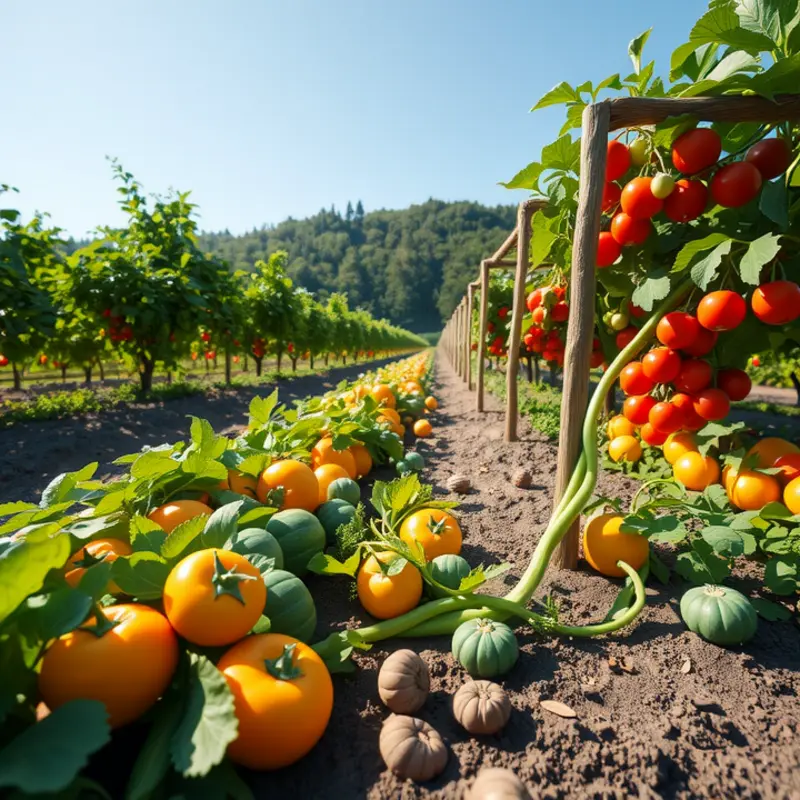Sauces add flavor and excitement to meals but can also contribute to food waste if not stored properly. With a few practical tips, you can extend the life of your sauces, minimize waste, and improve your kitchen management. Understanding the best practices for sauce storage will enable you to maintain flavor integrity while ensuring food safety. Let’s explore the best methods for safely storing your homemade and store-bought sauces.
Understanding Sauce Types and Their Storage Needs

Storing sauces correctly is crucial to maintain their flavor and safety. Different types of sauces require specific storage methods, whether they are homemade or commercially produced. Knowing these nuances helps in preserving their freshness and minimizing waste.
Homemade Sauces:
Homemade sauces often lack preservatives, making them more perishable than their commercial counterparts. Proper storage is key to extending their lifespan. Once made, it’s essential to cool sauces quickly to room temperature before storing them in airtight containers. Most homemade sauces should be refrigerated and are best used within three to five days. If you want them to last longer, freezing is a viable option—as long as the sauce’s ingredients freeze well. Remember to label and date each container to track freshness.
Commercial Sauces:
Commercially bought sauces usually contain preservatives that extend their shelf life. However, they still require proper care once opened. The best practice is to refrigerate them after opening unless the label indicates otherwise. Vinegar-based hot sauces or soy sauces might last at room temperature due to their low pH level, but storing them in the fridge can preserve their flavor integrity over time.
Ingredient Considerations:
The ingredients of a sauce often dictate its storage needs. Dairy-based sauces like Alfredo require refrigeration to prevent spoilage. Similarly, sauces containing herbs or fresh ingredients should be kept cold. On the other hand, sugar-heavy sauces like caramel can often be stored at room temperature, as sugar acts as a natural preservative.
Refrigeration Needs:
A general guideline is to refrigerate sauces if they contain perishable ingredients like cream, eggs, or fresh herbs. Make sure your fridge is set to the optimal temperature, usually around 34–40°F (1–4°C), to ensure these sauces remain safe for consumption. This practice also applies to opened jars of mayonnaise or ketchup that can harbor bacteria if left unrefrigerated for too long.
Best Practices for Storage:
Whether dealing with homemade or commercial sauces, consider investing in high-quality, airtight containers to keep air and moisture out. Avoid using old residual containers that previously stored other foods, as they could contaminate the sauce’s taste or introduce unwanted bacteria.
Finally, understanding how ingredients influence storage needs can help in both preserving sauces and making informed decisions about minimizing food waste. For additional insights on sustainable food storage, you may want to dive into this article on storing nuts and seeds. Applying similar principles can help extend the shelf life of your sauces while contributing to environmental sustainability.
Following these guidelines will not only enhance the longevity of your sauces but also ensure their freshness and safety, allowing you to enjoy every flavorful drop without concern for waste or spoilage.
Best Practices for Storing and Using Sauces

Efficient sauce storage starts with choosing the right containers. Opt for airtight glass jars or BPA-free plastic containers which prevent air exposure and maintain the sauce’s quality. Glass containers are excellent for acidic sauces since they do not interact with the sauce, ensuring no unwanted flavors are imparted.
Temperature plays a crucial role in sauce preservation. Store sauces in the refrigerator at approximately 37°F (3°C) to prolong freshness. Ensure your fridge maintains a consistent temperature, ideally utilizing a thermometer for accuracy.
Knowing expiration guidelines is essential in preventing spoilage and waste. Most homemade sauces last between 3-5 days in the fridge, although some, like vinegar-based sauces, may last longer. For store-bought sauces, adhere to the use-by date and consume the contents a few days after opening.
Labeling and dating your sauces is a practical way to manage your inventory. Use a waterproof marker to jot down the preparation or purchase date on the container. This helps you keep track and prioritize older sauces, reducing the likelihood of accidentally consuming them after quality has declined.
Freezing presents an excellent option for long-term sauce storage. Most sauces can be stored in the freezer for up to three months, although cream-based sauces might separate or change texture upon thawing. Use freezer-safe containers, leaving some space at the top for expansion, ensuring your sauces remain flavorful and fresh when defrosted.
To maintain sauce quality during freezing, consider portioning them into small, convenient sizes. Ice cube trays can be particularly useful for this, especially with sauces used in smaller quantities, such as pesto or homemade broth cubes. This approach minimizes waste and enables effortless sauce management.
Keeping track of sauces and their storage conditions aligns with broader food storage practices. For more tips on storage, consider this guide on storing nuts and seeds, which offers valuable insights that can be adapted to sauce storage.
Adopting these best practices in storing and using sauces not only minimizes waste but also ensures you enjoy them at their freshest. Organize your fridge, utilize clear labeling, and embrace your freezer as a valuable tool in preserving your favorite sauces.
Final words
Maintaining safe and efficient storage of sauces not only enhances their shelf life but also minimizes waste and maximizes convenience in the kitchen. By understanding the different types of sauces and their unique storage requirements, you can better manage your kitchen supplies. From using appropriate containers to freezing excess sauces, taking simple steps can significantly improve your food management practices. Equip yourself with knowledge, and enjoy the goodness of your sauces for much longer.







